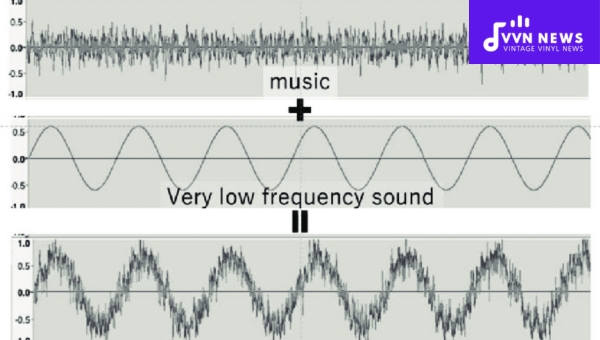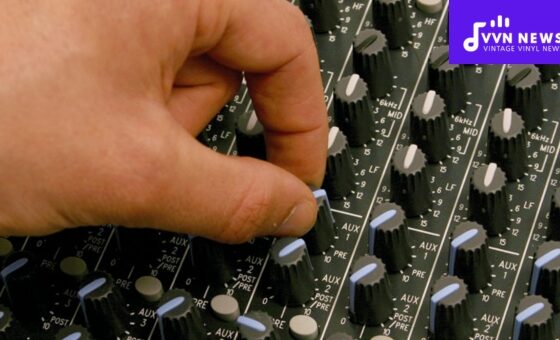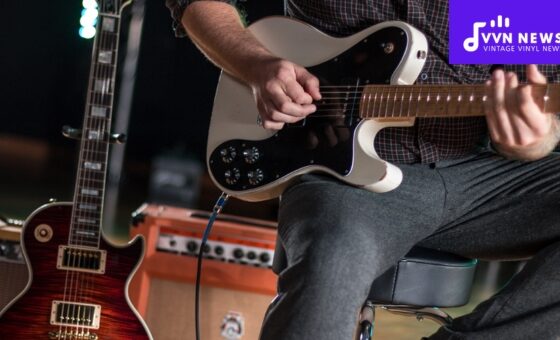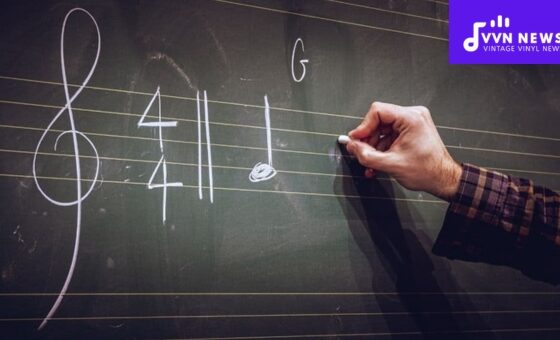Cracking the codes of sound engineering may look intimidating at first, but fret not! Everything’s easier with a road map.
That’s why I’ve put together this handy EQ cheat sheet to help guide you through the labyrinth of EQ, Frequency, and Pitch.
When I started my journey with audio mixing, I felt like I was drowning in a sea of jargon.
Not knowing your lows from your mids or where exactly to boost and cut can be overwhelming, but understanding EQ is imperative when it comes to achieving that perfect mix.
With this EQ Cheat Sheet, you’ll soon realize you’re more capable than ever. Buckle up because we’re about to shed some light on this dark corner of sound engineering.
What is EQ?
EQ, or Equalization, is a concept that revolves around balance. When you’re cooking, you don’t want too much of any particular spice overpowering the dish. Similarly, in the world of sound, EQ is your seasoning.
It allows you to adjust the volume of individual frequencies within an audio signal.
This way, you can heighten or lessen certain elements within the mix to craft a well-rounded and harmonious sound piece.
As an essential tool for audio engineering, EQ ensures all frequencies are well represented and contribute towards a balanced overall sound.
Whether it’s boosting a singer’s vocal range or reducing distracting background noises – knowing how to navigate EQ settings can dramatically improve your final output.
Also Read: 13 Best Power Conditioners For Superior Protection [Buying Guide]
Frequency in Music

One of the key elements in understanding EQ is fully grasping the concept of frequency. So, what is the frequency?
In simple terms, frequency refers to the speed at which an audio signal is vibrating per second. It’s expressed in Hertz (Hz), and it directly correlates to the pitch of a sound.
Types of Frequencies
There are several types of frequencies used in music, but we can generally group them into three main categories: low frequencies, mid frequencies, and high frequencies.
1. Low Frequencies: Ranging from 20 Hz to 250 Hz, these make up the bass content in your mixes. They give depth and power to a track but can also create muddiness if not treated well.
2. Mid-Frequencies: Spanning from 250 Hz to 2000 Hz (or 2 kHz), this range holds a lot of significant elements for most instruments.
3. High Frequencies: Anything above 2 kHz falls into this area, contributing to clarity and detail in a mix.
The Significance of Frequency in Music Mixing
Understanding these types of frequencies is extremely crucial when it comes to music mixing because each instrument has its own primary frequency areas.
This comprehension allows you to sit each instrument correctly into the mix without causing conflict between various instruments.
Sometimes, you may want certain aspects or elements within your mix to be more pronounced and stand out; this is where maneuvering around different frequencies using EQ tools comes into play.
Remember that these mentioned values are not definitive rules set in stone but rather guidelines that serve as starting points for novices diving headfirst into their sonic creativity.
Keep exploring and experimenting with aptitude because there’s no right or wrong when it’s to personal expression!
Three Effective Approaches to EQ
When it comes to adjusting sound, the art of EQ (Equalization) acts like your secret sauce.
Let’s navigate ourselves through these three effective methodologies of EQ – Filtering, Subtractive EQ, and Additive EQ.
Filtering: The Core Concept
EQ originally started as a tool for filters in telecommunications. Today, the core concept of Filtering remains an essential aspect in sound engineering.
In layman’s language, filters are used to remove frequencies that aren’t needed in your mix.
A filter allows frequencies above or below a certain point to pass through while reducing or eliminating others.
For instance, the ‘high-pass filter’ allows high frequencies to pass through while reducing low frequencies. Similarly, a ‘low-pass filter’ allows low frequencies to pass while curtailing the high ones.
By using filters correctly, you can remove unwanted noise and create room for other important elements in your mix.
Also Read: B Major: The Scale And Chords [Guide To This Beautiful Key]
Subtractive EQ: The Power of Removing
Less is often more when it comes to sound mixing, which is where Subtractive EQ shines brightly.
The major premise behind this technique is simple – instead of adding new layers of sound (which makes our mix clouded), we focus on removing parts that are conflicting or redundant with other instruments or voices.
This involves chopping off unnecessary frequencies and creating space for vital parts in our mix without making it overcrowded.
For example, if your vocals aren’t standing out enough within the mix, you might try cutting back on some mid-range frequencies from other instruments to give space for the voice instead of trying to make vocals louder.
Additive EQ: Enhancing Through Addition
Unlike subtractive EQ, where we’re taking away unnecessary parts from our mix, Additive EQ encourages us to enhance certain elements by adding different layers or boosting particular areas, which can help bring out a certain character or feeling within the song.
The best way I can put it into words would be this: Imagine you’re making a sandwich, and suddenly you realize something’s missing- you need more pickles!
However, do remember that as enticing as adding more might be too much can make your sandwich (or song) taste unbalanced!
These techniques aren’t intended as standalone approaches but rather collaborative tools for creating the best sounding music possible!
Don’t be afraid to experiment with combinations- discover what works best for your signature sound!
Essential Audio Frequency Ranges for Better Mixing

At the core of EQ lies the understanding of frequencies. Otherwise, it will all just appear like playing a game of darts with the lights turned off.
Sub-Bass: 20Hz – 60Hz
One can identify the sub-bass frequency range as that low, rumbling bass that you primarily feel rather than hear. It’s true! It’s more thrumming in your chest than to do with actual tones.
For most audio systems, accurately representing these frequencies can be challenging.
However, when properly managed (think dance music and dub), sub-bass ranges can add significant power and energy to a track.
Bass: 60Hz – 250Hz
Moving up our EQ cheat sheet, we enter the bass domain itself.
These are critical frequencies since they allows us humans to hear bass lines and rhythmic elements clearly.
The range offers a lot of weight and can warm your overall tonal quality.
Yet, remember, mixing here is tricky as too much in this range could make your mix sound muddy or unclear.
Also Read: How Much Should You Charge For Music Lessons? [Fair Rates Guide]
Low Mids (Mid-Bass): 250Hz – 500Hz
These are generally thick-sounding, more resonant parts of the spectrum where the raw energy of many instruments lies.
This range has a considerable weighty effect on tone as boosting too much can again result in muddiness, but cutting too much might thin it out.
Midrange: 500 Hz – 2KHz
Here is where most musical information exists – chords, notes, and melodies sit pretty in this band range.
Described as bringing fullness and body to an instrument or mix, some refer to this frequency zone as the critical midrange. Therefore, getting it right is vital for any mix.
Upper Mids: 2KHZ – 4KHz
This frequency band offers clarity or ‘definition’ to both vocals and instruments such as keyboards and guitars. Be careful, though! A little too much can make your audio sound harsh.
Presence: 4KHZ – 6KHZ
This is where clarity meets articulacy! This band gives intelligibility to vocals and adds attack to percussive elements without adding harshness that one might experience with Highs.
Brilliance: >6kHz
Finally ascending through our cheat sheet brings us into Brilliance territory – higher frequencies typically above 6kHz.
They’re responsible for sparkle and airiness in vocals while adding sibilance (‘sss’ sounds) post-healing overbearing lows/mids via sweet detailed seasoning at highs.
Mastering how each part fits into the grand scheme takes patience, but once mastered, it acts as an invaluable framework while pushing faders during your mixing sessions.
Remember that all mixes vary due its own unique audio content; hence, merely relying on EQ preset numbers won’t do justice. allowing your ears to be led will deliver magical results.
Also Read: E Flat Minor Pentatonic Scale [Master This Key With Our Guide]
Defining EQ Cheat Sheet and Its Unseen Benefits
As the name suggests, an EQ Cheat Sheet is a guide that helps in tweaking different frequencies for a vast array of musical instruments.
It’s a sound engineer’s saving grace, acting as a point of reference when fine-tuning their mix.
What I love most about these guides is simply how they simplify the complex world of sound engineering.
Whether you’re an amateur or an expert, it’s not unusual to forget the specific frequencies that lead to certain sonic qualities.
Sometimes we need that fundamental 200 Hz boost for acoustic guitars or might be forgetting about the customary 60 Hz dip required for vocals. Here’s where an EQ cheat Sheet becomes an invaluable ally.
The essential benefit remains its ease of accessibility and immediate translation into effective sound mixing and enhancement.
The idea is simple – provide precise frequency values corresponding to various musical elements, eliminating all guesswork and accelerating workflow – yet the outcome is astonishingly powerful.
Moreover, with regular consultation of EQ cheat sheets during sound mixing, I’ve discovered that eventually, it sharpens your intuition.
Over time, you’ll naturally remember necessary adjustments without any prompt – strengthening command over your craft.
Comprehensive Guide To Applying EQ On Various Instruments for Balanced Sound

Taming and controlling the EQ of different instruments is one of the considerable challenges engineers face while mixing.
Let’s deep-dive into some guidelines on how to approach the EQ for different instruments to achieve a balanced sound.
Kick Drum
The crux of your track lies in your kick drum. For a punchier sound, try reducing the 200-500 Hz range and increasing around 2-4 kHz.
The real power of a kick drum, however, lies in the sub-bass frequencies. Try boosting between 40-60 Hz for earth-shaking power.
Snare Drum
Your snare drum is all about that sharp, crisp snap. Cutting slightly at around 800 Hz can avoid muddiness while a boost between 2-5 kHz can significantly enhance its entire presence.
Toms
To bring out the body of your toms, give them a little lift in the range of 100-250 Hz; for dimension and presence, increase around 5 kHz.
Cymbals
Cymbals sparkle in the brilliance range (6kHz – 20kHz). However, be cautious not to overindulge – this could lead to harshness.
Percussion
For depth perception add more low mids (250Hz–500Hz), whereas for claps or snaps add around 1kHz–4kHz.
Bass
The form of your bass resides mainly in the bass range (60Hz–250Hz), but that raspy character that cuts through comes from elevating the mids somewhere around 700 Hz to 1 kHz.
Guitar
Acoustic guitars shine at around 10 kHz and get their warmth from boosting anywhere between 120 Hz to 200 Hz.
Place emphasis on clarity by carving out space in the midrange frequencies (500Hz –2Khz).
Piano
A piano has an incredibly extensive frequency range. The richness comes from a boost using EQ somewhere around the low mids (approximately 250 Hz). To accentuate crispness, use an increase at about 3kHz–6kHz.
Organ
To emphasize an organ’s harmonic content, look towards boosting its upper midrange frequencies at about the 3kHz mark.
Synths
Good synth sounds are generally achieved by manipulating EQ based on what fits well within your mix.
A useful tip is taking advantage of high-pass filters to avoid synths consuming too much space below where their important content lives, and this usually ranges around 1khz–6khz area.
Strings
Strings have their fundamental tones mostly laying in the lower-mid frequency (250Hz –500Hz).
A spike here can help them solidify their position within a mix without overpowering other elements.
Vocals
Vocals can be treated as kingpins of your mix. Clarity often resides within boosting between 2khz–4khz whilst adding warmth might require you to go lower at 150hz –800hz.
All these recommendations are simply starting points; every mix is unique and calls for different techniques while adjusting EQ based on what ‘fits’.
Remember that less goes a long way when it comes to EQ; notching out/lessening certain frequencies will resultantly make other frequencies more pronounced without them sounding overwhelming or harsh.
Also Read: 22 Best MIDI Controller Buying Guide [Choose The Right Gear]
The Real Deal with Frequency Charts
While frequency charts can be a great tool to learn your frequencies, they should be operated with caution.
Consider these charts as a rough guide rather than an unwavering law.
Issues with Frequency Charts
- Subjectivity of Sound: Unlike what frequency charts might lead us to believe, sound is incredibly subjective. What may sound like a cakewalk to one set of ears might feel like an untuned piano to another. Slavishly following prescribed EQ settings doesn’t hook into the human element that gives music its magic.
- Variance in Sound Sources: Depending upon the acoustic environment, microphone placement, and instrument build, identical instruments can sound drastically different.
- Over-emphasis on Boosting Frequencies: Frequency charts often focus on boosting frequencies that supposedly enhance certain qualities in an instrument’s sound. But this comes at the risk of over-processing your audio and potentially introducing distortion or phasing issues.
Instead of relying solely on frequency charts during mixing, I firmly believe in training your ears to understand and recognize various frequency bands.
Equip yourself with knowledge, but trust your instincts and taste to lead you towards a balanced and harmonious mix.
FAQs About EQ Cheat Sheet
What is the basic concept of EQ in audio production?
EQ, short for equalization, is the process of adjusting the balance of different frequency components in an audio signal. It helps enhance the essence of a sound and allows listeners to experience music more pleasantly.
How does frequency affect music mixing?
Frequency defines the pitch of a sound and understanding how it operates can significantly improve your mixing skills. It seals the divide between haphazardly adjusting settings and making precise tweaks to perfect your mix.
Between Additive EQ and Subtractive EQ, which one is better?
Neither! Both models serve distinct purposes. Additive EQ can enhance certain elements of a sound while Subtractive EQ helps omit unwanted parts. The choice depends entirely on what you wish to accomplish with your mix.
Why are frequency ranges significant in better mixing?
Knowing which frequencies correspond to different sounds can help you identify where adjustments need to be made during mixing—think pinpoint precision instead of random guesswork!
Are frequency charts accurate while mixing?
Frequency charts can serve as excellent references, but reliance on them alone isn’t ideal as every piece of music is unique and requires an individual approach for optimal results.
Conclusion
Understanding EQ is not about memorizing frequency charts or excessively tweaking dials.
It’s all about training your ears to identify frequencies and knowing how they interact with one another within a mix. Remember that subtle changes can make a profound impact.
The key lies in understanding and applying the fundamental principles according to your unique musical context.
Indeed, this EQ cheat sheet is a catalyst, a tool to get you started in the world of audio mixing; your ultimate guide should be — and always will be — your ears.








